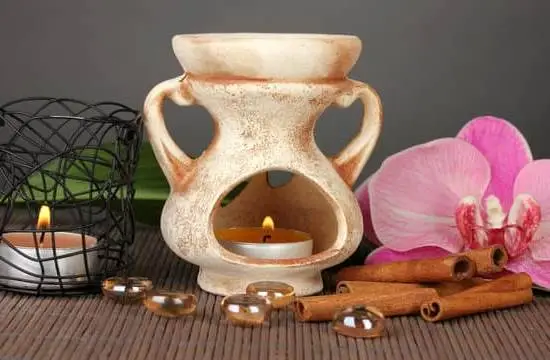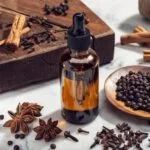Aromatherapy massage oil is a popular product in the field of alternative medicine, known for its numerous therapeutic benefits. This article aims to provide a comprehensive understanding of aromatherapy massage oil, exploring its basics, uses, and effects. Whether you are new to the practice or looking to deepen your knowledge, this article will guide you through the world of aromatherapy massage oil.
In the first section, we will delve into the fundamentals of aromatherapy and its benefits. Aromatherapy is a holistic healing practice that utilizes essential oils extracted from plant materials to promote physical and emotional well-being. These oils, when combined with a carrier oil such as sweet almond or jojoba oil, create aromatherapy massage oils that can be applied topically during a massage session.
Moving forward, we will demystify massage oils and explain their significance in aromatherapy. We will explore why they are used in conjunction with essential oils and how they enhance the therapeutic effects. Understanding the importance of using the right type of carrier oil is crucial in maximizing the potential benefits of an aromatherapy massage.
By grasping these foundational concepts, you are on your way to discovering the world of aromatherapy massage oil and all it has to offer. Continue reading to learn about different fragrances with distinct effects, factors to consider when selecting an ideal product, as well as techniques for application. Unlocking the science behind these therapeutic properties will allow you to harness the power of scent for relaxation and healing.
Understanding Aromatherapy
Aromatherapy is a holistic healing practice that utilizes the therapeutic properties of essential oils extracted from plants to promote physical, emotional, and mental well-being. This ancient practice has been used for thousands of years in various cultures around the world. The term “aromatherapy” was first coined by French chemist René-Maurice Gattefossé in the early 20th century after he discovered the healing effects of lavender oil on burns.
The benefits of aromatherapy are diverse and can be tailored to address different health concerns. One of the key benefits is its ability to promote relaxation and reduce stress. Certain essential oils such as lavender, chamomile, and ylang-ylang have calming properties that can help alleviate anxiety and improve sleep quality.
In addition to stress reduction, aromatherapy can also be used for pain management. Essential oils like peppermint, eucalyptus, and ginger have analgesic properties that can help relieve headaches, muscle aches, and joint pain. Furthermore, aromatherapy has been found to enhance mood, boost energy levels, support respiratory health, improve digestion, and even strengthen the immune system.
To fully experience the benefits of aromatherapy, it is important to understand that these essential oils are usually diluted before use in carrier oils such as almond oil or jojoba oil. This not only ensures safety but also allows for better absorption into the skin during massage. Aromatherapy massage combines the healing power of touch with the therapeutic properties of essential oils, providing a deeply relaxing and rejuvenating experience.
Demystifying Massage Oils
Massage oils play a crucial role in aromatherapy, enhancing the overall experience and therapeutic benefits of the practice. But what exactly are massage oils, and why are they used in aromatherapy? In this section, we will delve into the details to demystify massage oils and shed light on their importance in aromatherapy.
Firstly, it is important to understand that massage oils are specially formulated blends of carrier oils and essential oils. Carrier oils, such as jojoba oil, sweet almond oil, or coconut oil, provide a base for diluting the concentrated essential oils. They help facilitate smooth application on the skin during a massage while also nourishing and moisturizing it.
Essential oils, on the other hand, are highly potent plant extracts that contain aromatic compounds with various therapeutic properties. These essential oils are carefully selected based on their specific scents and effects to create customized blends for different purposes in aromatherapy. When mixed with carrier oils, they not only provide fragrance but also deliver their specific therapeutic benefits through absorption into the body.
Massage oils are used in aromatherapy for several reasons. Firstly, they act as a medium for facilitating smooth gliding movements during a massage session. This helps reduce friction between the therapist’s hands or tools and the client’s skin, making the entire experience more enjoyable and relaxing.
Secondly, massage oils enhance the effectiveness of aromatherapy through inhalation and absorption. The scent of essential oils stimulates the olfactory system when inhaled, sending signals to the brain that can evoke various physiological responses such as relaxation or alertness. Additionally, when applied topically during a massage, these oil blends get absorbed into the bloodstream through the skin. As a result, they can have systemic effects on different body systems and promote overall well-being.
The Power of Scent
Aromatherapy massage oils are not only beneficial for their relaxing and therapeutic properties but also for their incredible scents. The power of scent plays a crucial role in aromatherapy, as different fragrances can have varying effects on the mind and body. In this section, we will explore the different aromatherapy fragrances commonly used in massage oils and their specific effects.
There is a wide range of aromatherapy fragrances available, each with its unique scent and therapeutic benefits. Some popular fragrances used in massage oils include lavender, eucalyptus, peppermint, chamomile, and rosemary. Lavender is known for its calming and soothing properties, making it ideal for promoting relaxation and relieving stress. Eucalyptus has a refreshing scent that can help clear congestion and improve respiratory function. Peppermint is invigorating and can provide relief from headaches and muscle tension.
Chamomile is widely recognized for its calming effect on both the mind and body. It is often used to promote restful sleep and reduce anxiety or stress. Rosemary has a stimulating fragrance that can enhance mental clarity and improve focus. These are just a few examples of the many fragrances used in aromatherapy massage oils.
The effects of these aromatherapy fragrances go beyond simply smelling pleasant. When inhaled, the molecules of essential oils stimulate the olfactory system, triggering various responses in the brain that can influence mood, emotions, memory, and even physical sensations. This is why choosing the right fragrance for your needs is crucial when selecting an aromatherapy massage oil.
| Aromatherapy Fragrance | Effect |
|---|---|
| Lavender | Calming and soothing; promotes relaxation and reduces stress |
| Eucalyptus | Refreshing; clears congestion and improves respiratory function |
| Peppermint | Invigorating; provides relief from headaches and muscle tension |
| Chamomile | Calming; promotes restful sleep, reduces anxiety or stress |
| Rosemary | Stimulating; enhances mental clarity and improves focus |
By understanding the power of scent in aromatherapy massage oils, you can choose the fragrance that aligns with your desired effects. Whether you are seeking relaxation, rejuvenation, or relief from specific ailments, there is an aromatherapy fragrance suitable for your needs. Experimenting with different scents can also add a layer of enjoyment to your massage experience, providing a sensory journey that enhances both your physical and emotional well-being.
Choosing the Right Aromatherapy Massage Oil
Choosing the right aromatherapy massage oil is essential to ensure a satisfying and effective experience. With so many options available on the market, it can be challenging to determine which product is best for your needs. However, by considering a few key factors, you can make an informed decision and select the ideal aromatherapy massage oil for yourself or your clients.
Fragrance Preference
One of the most important factors to consider when choosing an aromatherapy massage oil is fragrance preference. Aromatherapy relies on the power of scent to promote relaxation and stimulate various therapeutic effects. Different fragrances have different properties and can evoke specific emotions and sensations.
For example, lavender is known for its calming properties, while citrus scents like lemon or orange can energize and uplift the mood. Consider the desired effects you want to achieve from your massage session and choose an aromatherapy massage oil with a fragrance that aligns with those goals.
Skin Sensitivity
Another crucial factor to take into account is your skin sensitivity or any known allergies. Some aromatherapy massage oils contain essential oils that may cause skin irritation or allergic reactions in certain individuals. Always read the product labels carefully and check for any potential allergens or irritants. If you have sensitive skin or allergies, opt for hypoallergenic formulas or oils specifically formulated for sensitive skin.
Therapeutic Benefits
Consider the therapeutic benefits offered by different aromatherapy massage oils before making a choice. Each essential oil used in these products has unique properties that can provide specific therapeutic benefits. For example, eucalyptus oil is often used for its decongestant properties, ideal for respiratory issues such as colds or allergies.
Peppermint oil can help alleviate headaches and improve focus, while ylang-ylang promotes relaxation and can help relieve stress and anxiety. Research the therapeutic benefits associated with different essential oils and choose an aromatherapy massage oil that aligns with your specific needs or concerns.
By considering factors such as fragrance preference, skin sensitivity, and therapeutic benefits, you can select the ideal aromatherapy massage oil for your needs. Remember to always read product labels, research ingredients thoroughly, and consult with a healthcare professional if you have any concerns about allergies or sensitivities. Choosing the right aromatherapy massage oil will enhance your overall experience and help you achieve the desired therapeutic effects.
How Aromatherapy Massage Oil Works
Aromatherapy massage oil works by harnessing the therapeutic properties of essential oils to enhance the healing and relaxation benefits of a massage. The science behind its effectiveness lies in how our bodies respond to different scents and how these scents can affect our physical and emotional well-being.
One way aromatherapy massage oil works is through inhalation. When the essential oils are diffused into the air or applied to the body, their molecules enter our nasal passages and stimulate our olfactory receptors. These receptors then send signals to the limbic system, which is responsible for regulating emotions, memory, and certain physiological functions. Different scents can trigger various responses in the limbic system, such as promoting relaxation, reducing anxiety, or boosting mood.
In addition to inhalation, aromatherapy massage oil also works by absorption. When the oil is massaged into the skin during a massage session, it penetrates the skin’s layers and enters the bloodstream. From there, it travels throughout the body and interacts with various systems and organs. For example, lavender oil has been found to have sedative effects on the central nervous system, while eucalyptus oil has anti-inflammatory properties that can help relieve muscular pain and tension.
To maximize the therapeutic benefits of aromatherapy massage oil, it is important to choose high-quality oils that are pure and free from synthetic additives. Essential oils are derived from plants through methods like steam distillation or cold-press extraction. Each essential oil has its own unique set of properties and benefits. Some may be more suitable for relaxation purposes, while others are better for relieving specific ailments such as headaches or digestive issues.
How Aromatherapy Massage Oil Works
- Inhalation: The molecules from essential oils enter our nasal passages and stimulate olfactory receptors which sends signals to brain regions responsible for emotions.
- Absorption: Massage oils penetrate skin layers during a massage session and enter the bloodstream where they interact with various organs and systems in the body.
- Choosing high-quality oils: It is important to select pure oils without synthetic additives derived through methods like steam distillation or cold-press extraction.
By understanding the science behind how aromatherapy massage oil works, individuals can make informed choices when selecting oils for their massage sessions. Whether seeking relaxation, pain relief, or other therapeutic benefits, the right aroma and choice of oil can complement a massage experience and enhance its overall effectiveness.
Techniques and Application
Preparing the Space
Before starting an aromatherapy massage, it is important to create a relaxing and peaceful environment for both the practitioner and recipient. Begin by finding a quiet space where you can be undisturbed. Make sure the room is comfortably warm, as the body can cool down during a massage. Dimming the lights or using candles can help set a calm ambiance. Playing soft, soothing music in the background can also enhance the experience.
Choosing the Right Oil
Selecting the appropriate aromatherapy massage oil is crucial for a successful session. Consider both the client’s preferences and any therapeutic effects desired. Essential oils, which are highly concentrated plant extracts, are typically used in aromatherapy massage oils. Common choices include lavender for relaxation, eucalyptus for respiratory support, and peppermint for muscle relief. Diluting essential oils with carrier oils like almond oil or jojoba oil is important to ensure they don’t cause skin irritation.
Applying the Oil
To begin the massage, start by warming up your hands by rubbing them together briskly. This helps to activate circulation and ensures comfort for both you and your client. Pour a small amount of the chosen aromatherapy massage oil into your palm and gently rub it between your hands to warm it further before applying it to their skin.
Using long, fluid strokes, apply the oil evenly over the recipient’s skin, covering larger areas such as their back or legs first before moving on to more specific areas like joints or pressure points. During an aromatherapy massage, it’s common to use techniques such as effleurage (long sweeping strokes), petrissage (kneading), and friction (deep circular motions) to provide relaxation and release tension.
Adjusting the Pressure
During an aromatherapy massage, it’s important to adjust the pressure according to the recipient’s comfort level and needs. Communicate with your client throughout the session to ensure the pressure applied is appropriate. For a relaxing massage, use lighter pressure with long, gliding strokes. If targeting specific muscles or areas of tension, you can apply deeper pressure using your palms, thumbs, or elbows. Always check for feedback from your client and adjust accordingly.
By following these step-by-step techniques for applying aromatherapy massage oil, practitioners can create a soothing and rejuvenating experience for their clients. Remember to always prioritize safety and individual preferences when selecting oils and adjusting pressure during the massage. With proper knowledge and practice, aromatherapy massage oil can enhance relaxation, promote healing, and provide numerous benefits for both body and mind.
Common Ingredients
Aromatherapy massage oils are made up of a combination of ingredients that work together to provide therapeutic benefits. These oils can be derived from various sources, including flowers, plants, and fruits. Each ingredient used in aromatherapy massage oils has its own unique properties, making it important to understand the key components found in these oils.
One common ingredient found in aromatherapy massage oils is essential oils. Essential oils are highly concentrated plant extracts that contain the natural fragrance and properties of the plant they are derived from. These oils are often used for their therapeutic effects, such as relaxation or pain relief. Examples of essential oils commonly used in aromatherapy massage oils include lavender, eucalyptus, and chamomile.
Carrier oils are another important component found in aromatherapy massage oils. Carrier oils are vegetable-based oils that are used to dilute the essential oil before applying it to the skin. They help to ensure the essential oil is not too strong and prevent any potential irritation or allergic reactions. Common carrier oils used in aromatherapy massage oil blends include sweet almond oil, jojoba oil, and coconut oil.
In addition to essential and carrier oils, some aromatherapy massage oil blends may also contain additional ingredients such as vitamins or soothing herbs. These ingredients can enhance the overall benefits of the massage oil by providing added nourishment or relaxation. For example, vitamin E is often added to massage oils for its moisturizing properties and ability to promote healthy skin.
| Common Ingredients | Description |
|---|---|
| Essential Oils | Highly concentrated plant extracts that provide therapeutic benefits and natural fragrance. |
| Carrier Oils | Vegetable-based oils used to dilute essential oils and prevent skin irritation. |
| Additional Ingredients | Vitamins or soothing herbs that enhance the overall benefits of the massage oil. |
DIY Aromatherapy Massage Oil Recipes
Aromatherapy massage oils can be easily customized to suit your specific needs. By creating your own blends, you have the opportunity to tailor the scent and therapeutic properties of the oil to promote relaxation or healing. DIY aromatherapy massage oil recipes allow you to experiment with different essential oils and carrier oils, resulting in a product that is uniquely suited to your preferences.
When creating your own custom blend of aromatherapy massage oil, it is important to consider the desired effect and choose essential oils accordingly. For relaxation, lavender, chamomile, and bergamot are popular choices due to their calming properties. For healing purposes, eucalyptus, tea tree, and peppermint are commonly used for their anti-inflammatory and analgesic effects.
In addition to selecting the appropriate essential oils, it is crucial to choose a carrier oil that will provide not only a suitable texture but also additional therapeutic benefits. Popular options include sweet almond oil, jojoba oil, coconut oil, and grapeseed oil. These carrier oils have their own unique properties such as moisturizing, nourishing, or even anti-aging effects.
| Ingredients | Amount |
|---|---|
| Lavender essential oil | 10 drops |
| Bergamot essential oil | 5 drops |
| Sweet almond oil (carrier oil) | 2 ounces |
In a clean glass bottle or container, combine the essential oils with the carrier oil. Close the lid tightly and shake well to ensure the oils are thoroughly mixed. You can adjust the number of drops of essential oil according to your preference for scent strength. Remember, a little goes a long way with essential oils.
When making your own aromatherapy massage oils, it is important to do a patch test on a small area of skin before using it all over your body. This will help ensure that you do not have any adverse reactions to the oil blend. Additionally, always store your DIY massage oil in a cool, dark place to maintain its quality and potency.
Creating your own custom blends of aromatherapy massage oil not only allows you to personalize your experience but also provides an opportunity for creativity and self-care. With some experimentation and knowledge about essential oils and carrier oils, you can create a truly unique product tailored to meet your relaxation or healing needs.
Safety Precautions
Patch Test Before Use
One important safety precaution to take when using aromatherapy massage oil is to always perform a patch test before applying it to a larger area of the body. This is especially crucial for individuals with sensitive skin or those prone to allergies.
To do a patch test, apply a small amount of the oil to the inside of your elbow or wrist and wait for 24 hours. If no adverse reactions occur, such as redness, itching, or irritation, then it is likely safe for you to use the oil.
Dilute Essential Oils Properly
When using aromatherapy massage oils that contain essential oils, it is important to dilute them properly. Essential oils are highly concentrated and can cause skin irritation or other adverse reactions if used undiluted. To dilute essential oils, mix a few drops with a carrier oil such as sweet almond oil or jojoba oil before applying it to the skin.
Avoid Sensitive Areas
Certain areas of the body are more sensitive than others and may react differently to aromatherapy massage oils. Avoid applying the oil near the eyes, ears, genitals, or broken skin as these areas are more prone to irritation. Also, be cautious when using certain essential oils like peppermint or cinnamon as they can cause discomfort if applied directly on sensitive areas.
Use Caution During Pregnancy and Certain Medical Conditions
It is important to exercise caution when using aromatherapy massage oil during pregnancy or if you have certain medical conditions such as asthma, epilepsy, allergies, or high blood pressure. Some essential oils may have contraindications for these conditions and it is recommended to consult with a healthcare professional before use.
Keep out of Reach of Children and Pets
Aromatherapy massage oils should always be stored in a secure location, out of reach of children and pets. Some essential oils can be harmful if ingested or applied improperly, so it is important to keep them safely stored in a cool and dark place.
Discontinue Use If Adverse Reactions Occur
If you experience any adverse reactions while using aromatherapy massage oil, such as skin rashes, hives, difficulty breathing, or dizziness, discontinue use immediately. It may be an indication of an allergic reaction or sensitivity to the oil. If symptoms persist or worsen, seek medical attention.
By following these important safety precautions when using aromatherapy massage oil, you can enjoy the benefits of this therapeutic practice while minimizing the risk of any potential harm. Safety should always come first when using any essential oils or products containing them, so taking the time to educate yourself on proper usage is essential for a safe and enjoyable experience.
Frequently Asked Questions
As aromatherapy massage oil becomes increasingly popular, it is natural for individuals to have questions regarding its use, benefits, and safety. In this section, we aim to address some of the most common queries about aromatherapy massage oil.
One frequently asked question is whether aromatherapy massage oil can be used on all skin types. The answer is yes, but it is crucial to choose the right type of oil based on your specific needs. For example, those with sensitive or dry skin may benefit from lighter oils such as almond or jojoba oil, while individuals with oily or acne-prone skin may prefer grapeseed or coconut oil.
Another common question relates to the potential side effects of using aromatherapy massage oil. While generally safe when used correctly, it is important to note that some individuals may have allergic reactions to certain essential oils. Therefore, it is recommended to conduct a patch test on a small area of skin before applying the oil all over the body. Additionally, pregnant women and those with certain health conditions should consult with a healthcare professional before using aromatherapy massage oil.
One query that often arises pertains to how long the effects of aromatherapy massage oil last. The duration of the effects can vary depending on factors such as the type and concentration of essential oils used and individual response. Generally, the effects can last anywhere from a few hours up to a day. It is important to remember that consistent use over time can produce more long-term benefits.
By addressing these frequently asked questions and providing accurate information about different aspects of aromatherapy massage oil usage, individuals can make informed decisions about incorporating this practice into their self-care routine. It is always recommended to seek guidance from a qualified aromatherapist or healthcare provider for personalized advice and recommendations based on individual needs and circumstances.
Conclusion
In conclusion, aromatherapy massage oil offers a variety of benefits for both the mind and body. By combining the therapeutic properties of essential oils with the relaxing techniques of massage, this practice provides a holistic approach to wellness and relaxation.
Throughout this article, we have explored the basics of aromatherapy massage oil, including its uses, benefits, and how it works. We have seen how different scents can have varying effects on our mood and overall well-being, and we have learned how to select the right product for our individual needs.
Furthermore, we have discussed important safety precautions to keep in mind when using aromatherapy massage oil. It is crucial to follow proper guidelines and ensure that you are using high-quality, pure oils to avoid any adverse reactions or allergies.
Whether you are looking for relaxation or healing, aromatherapy massage oil provides a natural solution. With its ability to reduce stress, enhance sleep quality, relieve muscle tension, and improve circulation, it truly has something to offer everyone.
So why not give it a try? Experience the many benefits that aromatherapy massage oil has to offer and start incorporating this practice into your self-care routine. Whether you choose ready-made blends or decide to create your own custom recipes, let the power of scent and touch take you on a journey of ultimate relaxation and rejuvenation.
Frequently Asked Questions
What is the aromatherapy massage oil used for?
Aromatherapy massage oil is specifically formulated and used to enhance the benefits of a massage through the use of essential oils. These oils are derived from various plants, flowers, and herbs, each with their own unique properties and scents.
The aromatherapy massage oil is carefully blended with carrier oils, which help to dilute the essential oils and allow for easy application on the client’s skin. The purpose of using aromatherapy massage oil is to not only provide relaxation but also to promote healing and balance within the body and mind.
What does a full body aromatherapy massage include?
A full body aromatherapy massage typically includes massaging the entire body, starting from the head or neck area down to the toes. The session begins with a consultation between the client and therapist to discuss any specific concerns or preferences.
During the massage, the therapist uses a combination of gentle flowing strokes, kneading techniques, and targeted pressure on certain areas where tension or discomfort may be present. The focus is on providing deep relaxation while incorporating the benefits of aromatherapy through the use of essential oils in the massage oil.
What happens during aromatherapy massage?
During an aromatherapy massage, several things happen simultaneously. Firstly, there is physical manipulation of soft tissues by applying pressure, friction, or stroking movements on muscles and other body parts. This helps to improve blood circulation and release any tension or knots in muscles.
Secondly, as aromatic essential oils are used in combination with carrier oils during the massage, these molecules enter both the skin and respiratory system through inhalation. This stimulates various receptors in our body that can have a therapeutic effect on our mood, emotional well-being, stress levels, and overall relaxation response. Lastly, as a client receives an aromatherapy massage in a calming environment with dim lighting and soothing background music, it creates a tranquil atmosphere that further enhances relaxation and promotes a sense of tranquility throughout the session.

Are you looking for a natural way to improve your health and wellbeing?
If so, aromatherapy may be the answer for you.





